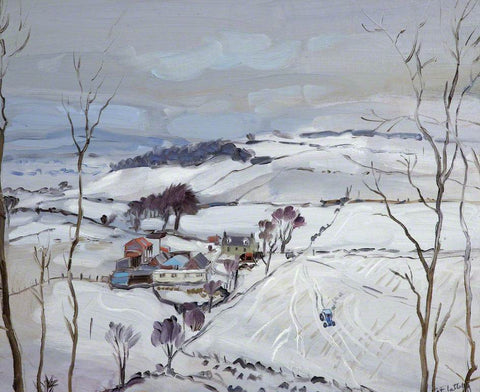Art Appreciation Series: Lucy Pratt on Alistair Frederick Flattely

We asked our artists to share their favourite works from our Permanent Collection. Here is volunteer Geraldine Lucy Pratt's pick:
Alistair Frederick Flattely, Snow, Kincardineshire, oil on canvas, 49 x 59cm
The gestural lashings of oil paint that combine to render Alistair Frederick Flattely’s Snow, Kincardineshire are transportive. If my look is too lingering, it feels as if a snow-pile could accumulate around my own feet in the same way it has blanketed the ground in Flattely’s Scottish scene. It is a sensation not dissimilar to that experience upon observing Pieter Bruegel’s Hunters in the Snow. Flattely’s piece, if compared to Bruegel’s, seems a less populated, blue toned transcription of the Netherlandish work. Of course, the Netherlands and remote Kincardineshire have few similarities to attest, but it is in this notion we can understand the universality of seasonal change. Landscapes, now canonical to British painting, so often find their popularity in documenting the effects of the seasons; Flattely’s piece is a charming example of this pursuit.
The work is unfussy, reductive even. A farmyard, subsumed by snow-laden fields, situates itself in the mid ground. Our observation is unobstructed, framed by the threadbare trees that stretch upwards in the right and left planes. An icy sky, composed of only a handful of brushstrokes, melts into the soft glaucous boundary of the distant horizon. The industrious tractor that ploughs through the field is an endearing speck upon the whitewash fields - it is my personal highlight of the work. Its spirited journeying, upon tracks drawn from the labour of previous excursions, display an unmistakably British pluckiness.
Snow, Kincardinehsire is not a work of painstaking detail, but accuracy is not surrendered consequently. In fact, Flattely’s painterly impression is a favourite of mine in its capacity to so astutely compose the
atmosphere of a trying winter. The work is not despondent, but implicitly optimistic - just like the valiant vehicle he paints, Flattely tells us: ‘we will get through!’